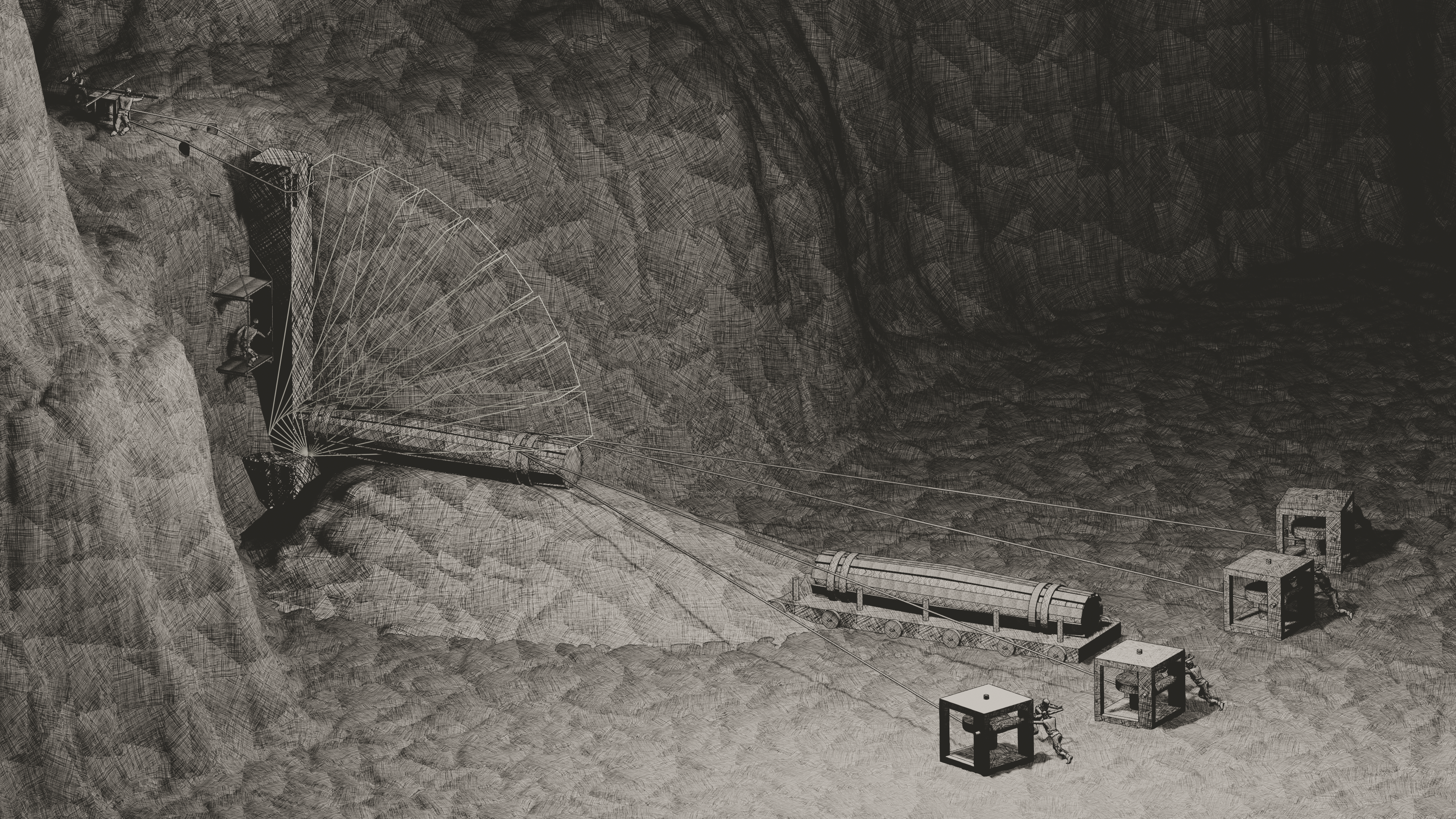The Quarry
From mountain face to sledge
During the Renaissance, architects visited quarries to select the best stone for monolithic columns, and they used simple machines to lower these massive blocks to the quarry floor. These columns were then shaped and transported on wooden sledges pulled by oxen, with inclined paths facilitating their journey to the seashore. The process was time-intensive, with even a 30-meter descent taking two days, and the entire journey to the seashore taking four months. The study investigates whether machines or manual labor powered these operations during the early Renaissance. Limited historical evidence suggests machine use, supported by records of Michelangelo's payments for various equipment. However, details about the transition from the mountain face to sledges remain unclear.

While the study does not focus on quarrying techniques, it explores whether columns were excavated vertically or horizontally based on historical sources. It visualizes possible setups for Francesco's machines for both methods, emphasizing that it does not confirm the use of the ancient horizontal method during the early modern period but demonstrates how Francesco's machines could have addressed technical challenges. The study includes visualizations of column lowering for both excavation methods.